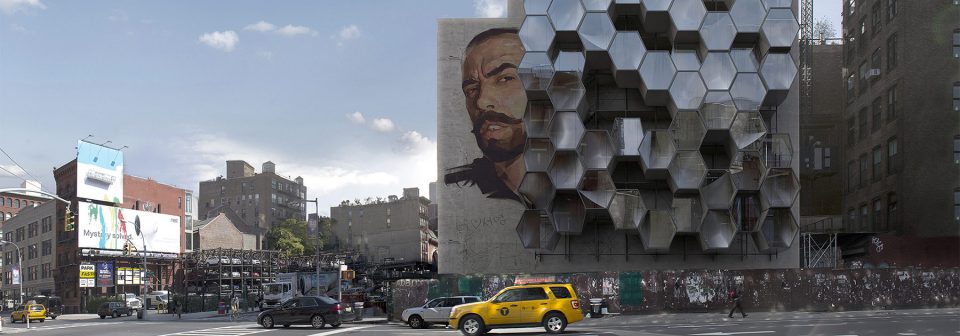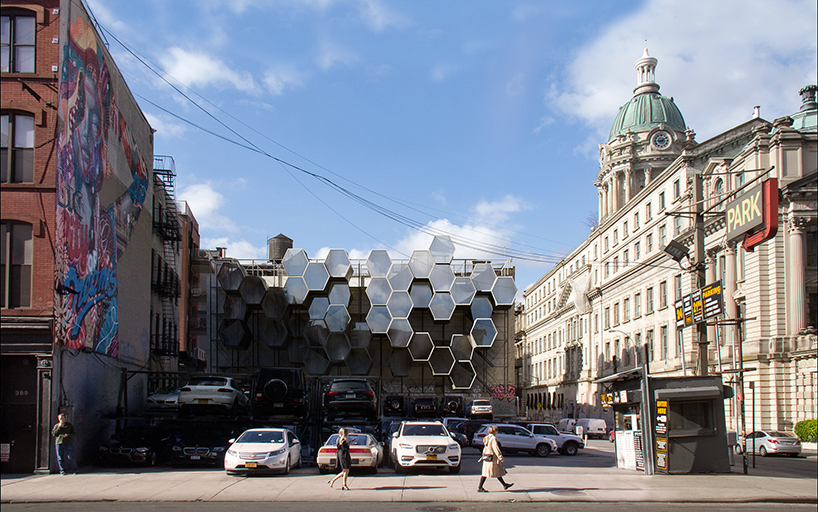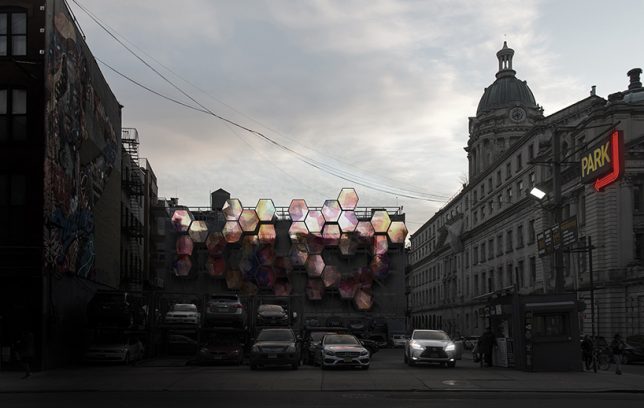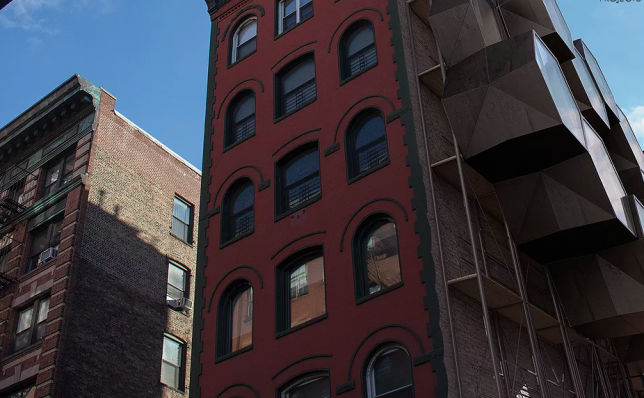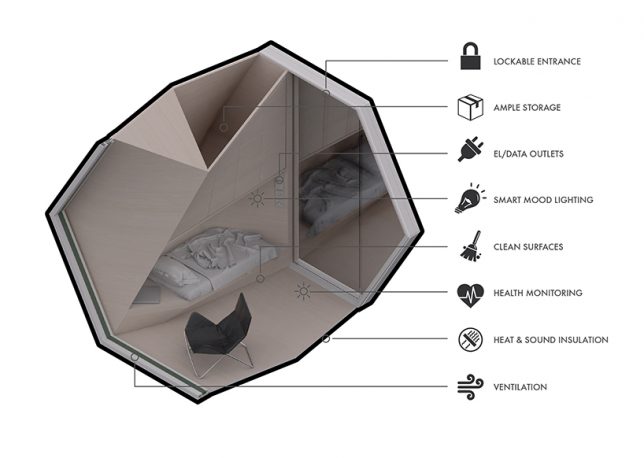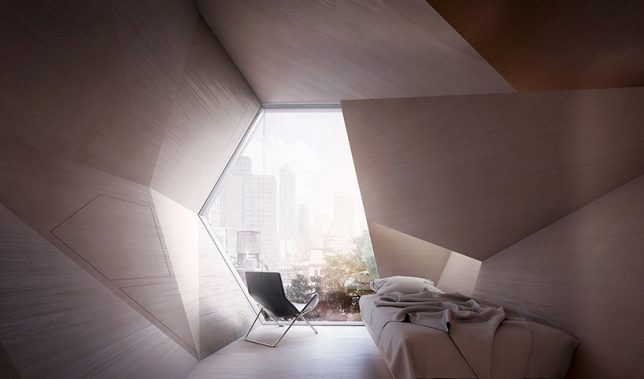With homelessness in many cities reaching its highest levels since the Great Depression, some designers and architects are getting more creative with solutions, like this honeycomb-shaped 3D-printed ‘micro neighborhood’ designed to cling to existing buildings. In New York City in particular, homelessness has grown steadily over the past two decades, and architecture firm Framlab believes two clear actions can be taken today to alleviate the problem: providing more low-income housing, and bolstering housing assistance programs to reduce the eviction rate.
‘Homed’ is their vision for step one. They hope to take advantage of prefabrication technology to produce inexpensive, easy-to-build micro-units to get the homeless population housed immediately. To do that, they’d have to circumvent the obstacle of competing against the city’s real estate moguls for available land. They point out that while unbuilt lots are hard to come by, there’s plenty of vertical real state on the blank sidewalls of buildings.
“Homed is a proposal that seeks to capitalize on this ‘vertical land,’” they say. “In conjunction with a flexible framework that already exists in the city – scaffolding – hexagon-shaped housing modules are designed to connect to the scaffolding structure, pack densely, and create a seconds active layer on top of the empty wall. In aggregate, this forms clusters of suspended micro-neighborhoods of shelters for the city’s least fortunate.”
“The Unit is designed to provide year-round home for its residents. While the exterior construction of steel and oxidized aluminum deals with the wear and tear of the city, the interior is made up of organic shapes of 3D-printed plastic that – clad with wood laminate – create a warm and friendly environment. As the interior modules are 3D printed, an endless amount of spatial and functional needs can be met, and the space can be reconfigured and expanded upon when needed.”
Of course, it’s pertinent to point out that the global housing crisis won’t be solved until our current (undeniably dire) income stratification crisis is alleviated and everyone can afford to enjoy a reasonable standard of living, thus eliminating the need to build special parasitic structures for homeless people. There’s also the fact that many unhoused people are not physically capable of climbing the stairs of scaffolding in order to access comfortable housing. But it’s nice to see architects and designers thinking about these problems, and starting discussions that could pave the way toward actual change.
